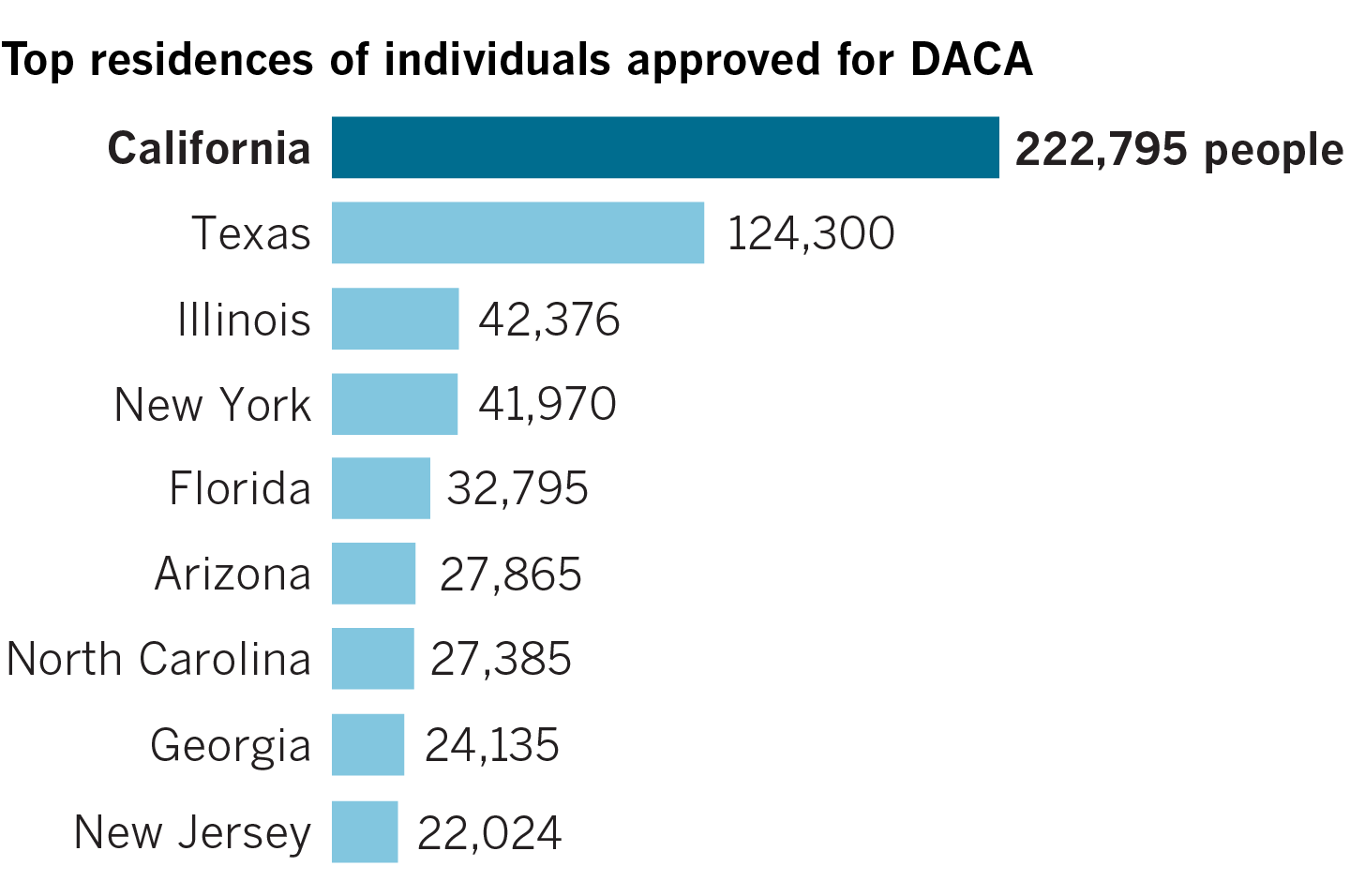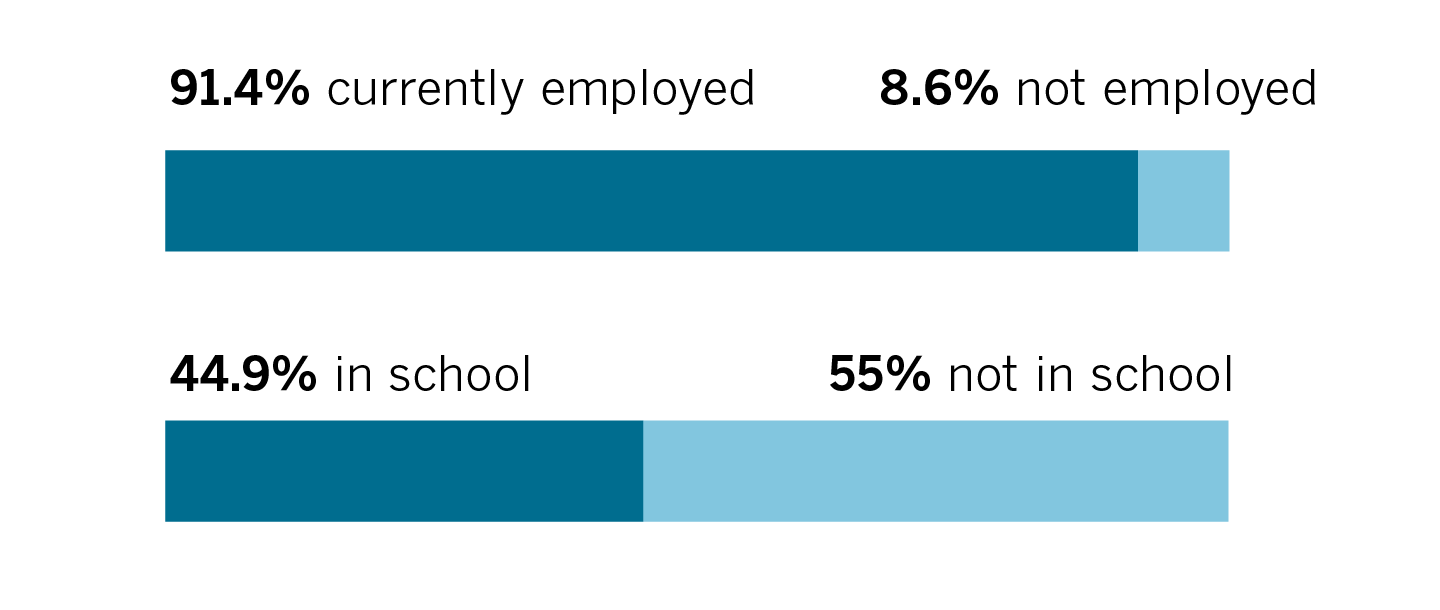What’s next for DACA and the nearly 800,000 people protected by it
The Trump administration announced Tuesday that it will end Deferred Action for Childhood Arrivals. The program, which began in 2012, protects children who may have been brought into the country illegally or overstayed their visas from deportation and allows them to work legally. DACA’s fate now lies in the hands of Congress, which can choose to act to protect the program within the next six months. Here’s what you need to know.
How DACA works
On June 15, 2012, the Obama administration implemented DACA. Under the program, people who came to the United States as children and met several key guidelines would not face deportation for two years, and could then apply to renew their status as a DACA recipient. Immigrants who were approved would also be eligible for work authorization. Nearly 800,000 DACA recipients have received approval to go to school and work legally in the United States.
How many people does DACA affect? Of an estimated 1.1 million DACA-eligible immigrants living in the United States in 2014, 78% had applied for protections under the program, according to a Pew Research Center study.

People who receive work permits through DACA must renew them every two years. The number of people accepted to the program peaked in 2013, but initial acceptances into the program have lagged behind permit renewals in recent years.

Who is in DACA?
When DACA became a reality in 2012, it gave a specific group of people protections against deportation. To receive those protections an individual had to have come to the United States prior to turning 16, but be younger than 31 years old. The individual also had to be in or have completed school, and could not have a criminal record.
Subsequent renewals of DACA permits also were contingent on meeting these requirements. Applications were no longer being accepted as of Tuesday.
While stopping short of providing a pathway to citizenship, DACA protection allowed recipients to lawfully hold a job or purchase a home. Recipients could attend college or join the military. And they could do these things without the threat of deportation.
Here's who has entered the program in the last five years:
According to U.S. Citizenship and Immigration Services, DACA recipients are young. In 2014, the largest age group of DACA recipients were individuals younger than 19.

They are also overwhelmingly from Mexico, with a smaller percentage from Central American and South American countries.

Although federal figures show that DACA recipients live in every state, most live in California and Texas.

The vast majority of DACA recipients are employed, and almost half of them are currently in school, according to data collected in an online survey by the Center for American Progress, a left-leaning think tank. 36% of the respondents over the age of 25 reported that they had a Bachelor's degree or higher.

The numbers present a different picture than the one painted by President Trump. In a statement announcing his decision to end DACA, Trump said the program led to an influx of people coming in across the border — many of them "young people who would become members of violent gangs throughout our country, such as MS-13."
What happens next?
Trump has turned to Congress to decide what comes next. If Congress does not pass new immigration legislation that addresses the program, current beneficiaries' deferred action would begin to expire. According to the Cato Institute, 305,297 immigrants would lose their work permits in 2018.

If current DACA recipients lost their work permits, many states could see a huge effect on their economies — and California would be hit harder than any other state. California would lose an estimated $11.6 billion in gross domestic product, according to the Center for American Progress.

Despite his statement on Tuesday morning, Trump hinted that evening on Twitter that if Congress can't find an agreement on the program, he would take another look at it — but provided no other details.
Congress now has 6 months to legalize DACA (something the Obama Administration was unable to do). If they can't, I will revisit this issue!
— Donald J. Trump (@realDonaldTrump) September 6, 2017
Are you a DACA participant? We want to hear your story. Call or text us at 951-394-3952 and tell us how Donald Trump's decision to end the program would affect you.
UPDATES:
Sept. 7, 10:12 a.m.: This page has been updated with language to clarify that individuals who qualify for DACA may have been brought into the United States illegally, or may have immigrated legally and overstayed their visas.